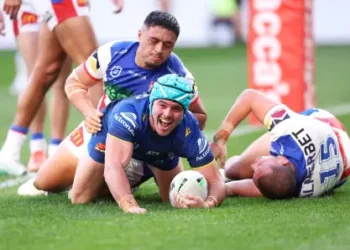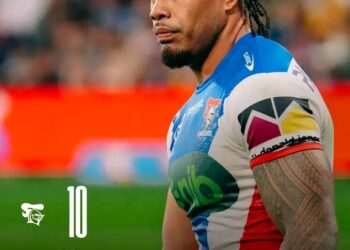brisbane broncos’ inability to set up a benefiting platform to enhance player performance after an injury
for years, the brisbane broncos have been one of the most successful and widely supported teams in the nrl. however, recent seasons have exposed a major flaw in their system: the inability to establish a robust platform that supports injured players in their return to peak performance. this deficiency has raised concerns about player welfare, team performance, and the long-term sustainability of the club’s success.
lack of an effective rehabilitation structure
one of the most glaring issues within the broncos’ system is the lack of a comprehensive and individualized rehabilitation program. many other elite nrl clubs have invested in cutting-edge sports science, injury management, and specialized recovery programs to ensure their players return stronger after injuries. in contrast, the broncos have struggled to implement a structured system that caters to each player’s specific needs.
in recent years, several key players have returned from injury only to struggle with form or suffer recurring issues. without a properly designed recovery plan, the risk of reinjury increases, leading to prolonged absences and diminished contributions to the team’s performance. the inability to address these challenges effectively has been a significant factor in the broncos’ inconsistent form.
failure to integrate returning players
even when players recover physically, the broncos have failed to provide a seamless transition back into full-speed nrl action. match fitness is crucial, and players often need time to regain confidence and rhythm. however, the club has not established a proper pathway to gradually reintegrate players into the squad, often rushing them back into high-intensity games without adequate preparation.
this approach not only impacts individual performance but also disrupts team cohesion. a player who is not fully match-fit can become a liability on the field, which can have a domino effect on team morale and strategic execution.
mental and psychological support concerns
recovering from an injury is not just a physical process; mental resilience plays a crucial role in an athlete’s return to form. unfortunately, the broncos have seemingly neglected the psychological aspect of injury recovery. many top nrl clubs provide sports psychologists and mental conditioning coaches to help players regain confidence, but brisbane has not demonstrated a strong commitment in this area.
players who suffer long-term injuries often struggle with self-doubt and pressure to perform at previous levels. without proper mental support, their return can be riddled with hesitation, ultimately affecting their ability to contribute effectively on the field.
comparison with other nrl clubs
clubs like the penrith panthers, melbourne storm, and sydney roosters have excelled in player rehabilitation, ensuring that returning stars hit the ground running. they have invested in cutting-edge recovery technology, personalized training programs, and phased return-to-play protocols.
in contrast, the broncos have shown a reluctance to modernize their approach, which has left them lagging behind their rivals. without serious investment in this area, the club risks falling further behind in the competitive landscape of the nrl.
potential solutions
for the broncos to address this issue effectively, they must:
- invest in a high-performance recovery team – hiring experienced physiotherapists, sports scientists, and recovery specialists to tailor rehabilitation plans for each player.
- develop a structured return-to-play program – creating a phased approach that allows players to regain match fitness gradually through controlled training and second-tier games.
- enhance mental support services – integrating sports psychologists and mental conditioning programs to assist players in overcoming psychological hurdles post-injury.
- benchmark against successful nrl clubs – studying the best practices of leading clubs and implementing similar strategies to improve injury recovery outcomes.
conclusion
if the brisbane broncos want to reclaim their position as a dominant force in the nrl, they must address their failure to establish a platform that enhances player performance post-injury. by prioritizing a holistic recovery approach that includes physical, mental, and strategic reintegration, the club can ensure that injured players return stronger and contribute effectively to the team’s success. failure to act on this issue will only continue to hinder the club’s progress and competitive standing in the nrl.










